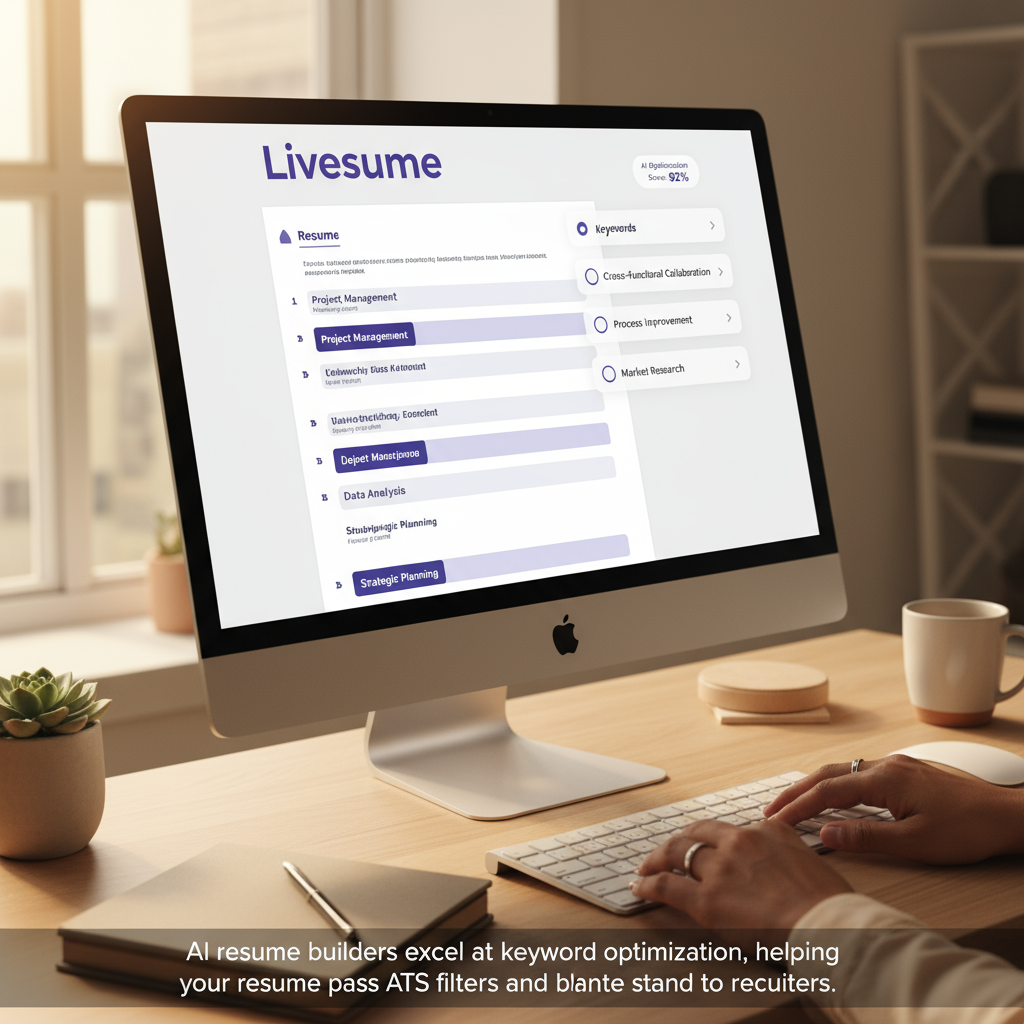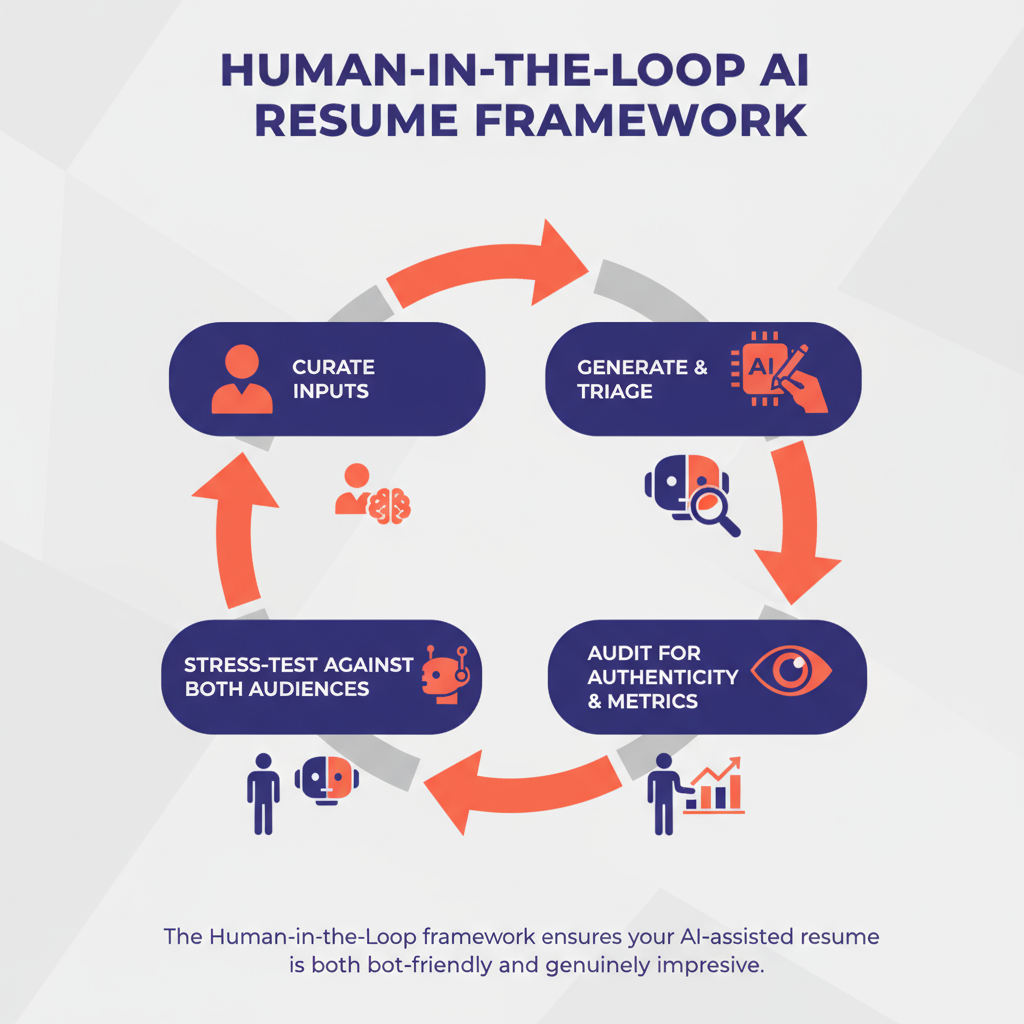You’ve stared at that blinking cursor on a blank resume template, haven’t you? The promise of an AI resume builder—a perfect, job-winning document in minutes—sounds incredible. But then you see the output: a generic, buzzword-stuffed summary that sounds nothing like you. It's a common frustration that leaves you wondering if you're just wasting time on a robot that makes you sound like one. Let's cut through the noise. This guide will show you how to use AI as a smart co-pilot, not an autopilot, to create a resume that genuinely opens doors.
Key Takeaways
- AI is a brainstorming partner, not your replacement. Use it to generate ideas and crush writer's block, but the final product needs your voice and strategic edits.
- They give you an edge against screening software. AI tools are fantastic at identifying and weaving in the right keywords to get you past the initial Applicant Tracking System (ATS) filters.
- Your results depend entirely on your input. Giving an AI tool a single, vague job title will yield vague, useless results. High-quality inputs are non-negotiable.
- The best tools connect your resume to a bigger picture. A great resume is just one piece. Modern tools help you build a cohesive professional brand online, like a professional page.

What Do AI Resume Builders Actually Do?
At their core, AI resume builders use language models (similar to the tech behind ChatGPT) to process vast amounts of information. They don't just fill in a template; they perform specific jobs to make your resume more effective. The main functions include:
- Keyword Optimization: They scan your draft and compare it against multiple job descriptions, suggesting keywords and phrases you've missed that are crucial for passing an ATS scan.
- Content Generation: Stuck on how to phrase an accomplishment? They can generate bullet points, professional summaries, and even skill descriptions. This is a great starting point, but never the final word.
- Formatting and Consistency: The AI ensures your formatting is clean, professional, and consistent, which is a small detail that has a big impact on readability for human recruiters.
Think of it less as a writer and more as a data analyst. It's crunching the numbers on what skills and terms are most valued for the role you want.
The Good, The Bad, and The Robotic: A Frank Comparison
Let's be honest, these tools aren't magic. Their effectiveness comes down to how you use them. When used correctly, they can dramatically speed up your process and improve your odds.
Before AI: You might spend hours agonizing over every word, guessing which keywords matter, and still end up with a resume that gets ignored by ATS bots. Your application-to-interview rate is discouragingly low.
After using an AI co-pilot: You analyze 5 target job descriptions in minutes, identify the top 10 keywords, and integrate them naturally into your achievements. Your ATS match score jumps from 50% to over 85%, and you start getting callbacks for the right roles.
How Top AI Resume Tools Stack Up
Not all tools are created equal. Here’s a quick rundown of what’s out there:
- Livesume: Best for building an integrated professional identity. It doesn't just build a document; it helps you create a Live Resume and a complete personal website. It's the right choice if you want to show, not just tell, your skills.
- Teal: Excellent for the hyper-organized job seeker. Its Chrome extension is fantastic for tracking jobs and pulling keywords directly from listings as you browse.
- Kickresume: Strong focus on design and creative templates. If you're in a creative field where visual presentation is key, it’s a solid option.
- Rezi: Heavily focused on ATS scoring. It gives you a real-time score as you write and edit, which is great for ensuring you meet the baseline technical requirements.
Build a Resume That Does More
Don't just make another document. Create a dynamic professional page that gets you noticed. Livesume’s builder connects your resume to your digital portfolio, turning a piece of paper into a career story. Start building for free.
The "Human-in-the-Loop" Framework for a Winning AI Resume
To get a resume that’s both robot-friendly and human-impressive, you can't just click "generate." Follow this framework to ensure you're in control of the final product.

Step 1: Curate Your Inputs
This is the most critical step. Garbage in, garbage out. Instead of a single job title, provide the AI with rich, high-quality source material.
Action: Upload your most detailed master resume, copy-paste 3-5 relevant job descriptions for your target role, and add a link to your LinkedIn profile.
Step 2: Generate and Triage
Now, let the AI do its work. Ask it to generate a professional summary and several bullet points for your most recent role. Your job isn't to accept this first draft. Your job is to act as an editor.
Action: Triage the suggestions. Cherry-pick the strongest phrases, combine ideas from different versions, and discard anything that sounds generic or cliché.
Step 3: Audit for Authenticity and Metrics
Read the AI-assisted text out loud. Does it sound like something you would actually say? More importantly, is it backed by proof? AI is good at creating plausible-sounding statements, but it can't invent your achievements.
Action: Edit every single line to add your voice. Most importantly, inject metrics. Change "Managed social media campaigns" to "Grew social media engagement by 35% over two quarters by launching a data-driven content strategy."
Step 4: Stress-Test Against Both Audiences
Your resume has two audiences: the machine and the human. It has to pass both inspections.
Action: Run the final draft through a built-in ATS checker to ensure you have a high match score. Then, send it to a trusted friend or mentor and ask, "Does this sound like me?" and "Would you hire this person?"
Beyond the Document: Is Your Resume the Whole Story?
Here’s a hard truth: in today's market, a PDF resume is often just the first handshake. Recruiters and hiring managers will Google you. What they find can either reinforce your application or undermine it. A resume that links to a compelling online presence is a massive advantage.
Before: A recruiter receives your resume. It's good, but it's just a document. They have 50 others just like it.
After: Your resume includes a link to your Livesume digital portfolio. The recruiter clicks and sees your projects, case studies, and testimonials. You’ve transformed a 30-second scan into a 3-minute exploration of your work, making you far more memorable than the other 49 candidates.
Answering Your Top Questions About AI Resume Tools
Can AI write my whole resume for me?
Technically, yes, but you shouldn't let it. An entirely AI-generated resume will lack personal context, specific metrics, and your unique voice. It's a recipe for a document that feels bland and unmemorable.
Will recruiters know I used AI?
They won't know and won't care, *if* you do it right. If your resume is full of generic AI phrases and lacks personality, they'll know something is off. The goal is to use AI for the heavy lifting (keywords, structure) and then add your own polish and achievements.
Are free AI resume builders any good?
They can be great for basic tasks like formatting and initial keyword ideas. However, paid tools often provide more advanced analytics, better integrations, and the ability to build out a more comprehensive professional presence, like a services page or portfolio.
How do AI resume builders help with ATS?
They excel at this. They scan job descriptions to find the most important keywords and skills, then help you weave them into your resume. This significantly increases the chances of your resume being flagged as a "match" by the automated system.
What's the biggest mistake people make with these tools?
Accepting the first draft without critical review. The biggest mistake is trusting the AI blindly. You must fact-check, edit for voice, and add specific, quantifiable achievements to every single bullet point.
Is it better to use AI or a professional resume writer?
It depends on your budget and needs. A great human writer can provide deep strategic insight. An AI tool is a powerful, affordable option that puts you in the driver's seat. For most people, an AI co-pilot is more than enough to create a top-tier resume, as long as you're willing to do the editing.
Turn Your AI Draft into a Hiring Signal
So, are AI resume builders a waste of time? Only if you treat them like a magic button. If you treat them like a powerful assistant that you direct, they become one of the most efficient tools in your job search toolkit.
Here’s how to get started today:
- Gather your source files: Your old resume, your LinkedIn profile, and links to 3-5 jobs you're excited about.
- Choose your tool: Select a builder that aligns with your goals. If you want to build a complete personal brand online, Livesume is the clear choice.
- Apply the "Human-in-the-Loop" framework: Input, generate, audit, and test. Be the editor, not just the user.
- Connect your resume to your story: Use your resume to drive traffic to your portfolio or professional page. Give recruiters more reasons to be impressed.
Stop fighting the blank page and start building a smarter application. You'll save time, beat the bots, and get in front of the people who can give you the job you deserve.